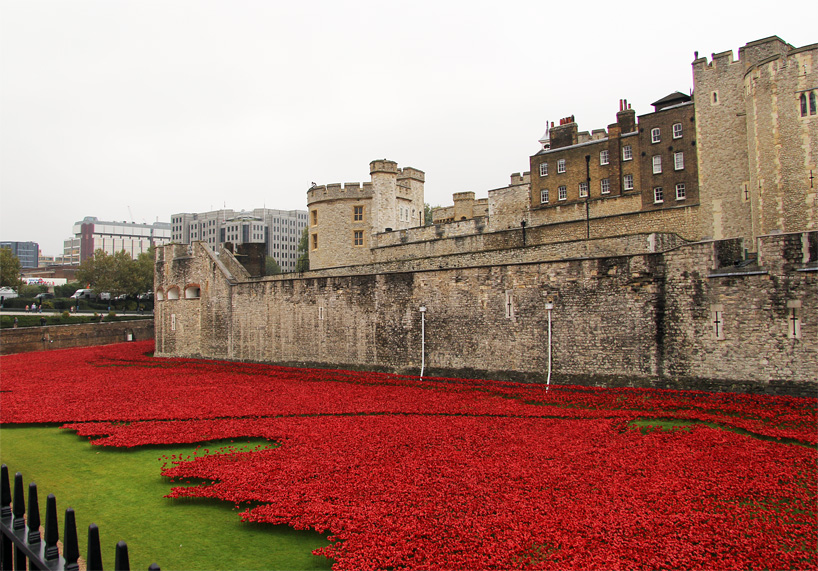

Planting all 888,246 poppies was a huge undertaking. ‘The success took us all by surprise’ … Tom Piper, left, and Paul Cummins at the Tower. A second section, Wave, was visible from across the river. It became the starting point, the place all the poppies flowed out from and crept around the Tower. So I designed Weeping Window: the moment you came out of the tube station, you could see poppies cascading out of the Tower’s bastion window. Given that you can’t see the moat until you’re right on top of it, we needed something you could see from a distance.

I started thinking about whether there was a way it could relate more closely to, and engage with, the Tower itself. Of course it was an exciting and bold project, but at the point of planning I was worried that there would be so much first world war memorabilia and associated events that people wouldn’t be interested and that first world war fatigue would have set in. As you looked out onto the sea of red, you felt overwhelmed by the thought of so many people sacrificing themselves for what we have now. One, a soldier who’d been injured by an explosion in Afghanistan that had killed half his regiment, told me the poppies he was planting represented the friends he had lost.
.jpg)
Every single life had to be represented.A huge team of volunteers planted them all in the moat. We sprayed them red and counted them in and out, then the Beefeaters counted them all again at the Tower.
#Remembrance poppy tower of london full
By the time we’d stacked them all up to dry, on piles of boards raised by bricks, the studio looked like it was full of trenches. I did nothing but make flowers for almost a year: 300 people at three different sites rolled, cut and shaped every poppy by hand. Each had six petals, one for each charity I wanted to support with money raised from selling the poppies afterwards. Making nearly one million ceramic poppies is a long process. Those wanting to see the Tree of Remembrance can do so by visiting Fareham College where the installation will be on display until the end of November.‘I didn’t stop talking until a meeting had been agreed’ … the Tower moat filled with poppies. We are so proud to finally see it on public display for our local community.” Our pupils, and the staff and students at Fareham College, have worked incredibly hard to create it. “The Tree of Remembrance has been a wonderful and important project to be involved in. This year marks 100 years since the First World War armistice.Īdele Deasy, Headteacher of Fareham Academy, added: Remembrance Day is held in Commonwealth countries to remember members of the armed forces who died in the line of duty, and those who have been involved with and affected by war and conflict. I’m incredibly proud that our staff and students were able to collaborate with Fareham Academy’s young creative pupils on this project.” “We’re so pleased to be involved in commemorating such an important event. Nigel Duncan, Principal of Fareham College, said: The Mayor of Fareham, Councillor Mrs Susan Bayford and Royal Navy commander Trefor Fox, as well as teachers and pupils from a number of local schools, attended the unveiling, which took place at Fareham College on 9 November.Īs part of the opening ceremony, Fareham College art and design student Libby Austin recited the poem “For the Fallen” by Laurence Binyon. Pupils from St Jude’s Catholic Primary School were also involved in the special memorial.Įach student created a clay poppy to commemorate the centenary in the spirit of the famous ‘Blood Swept Lands and Seas of Red’ installation of 2014 at the Tower of London. The project, initiated by Fareham Academy, saw art and design students and staff from neighbouring Fareham College deliver workshops to Year 7 students at Fareham Academy in preparation for the installation. Fareham College has sponsored the Tree of Remembrance, an art installation to commemorate the 100th Anniversary of the end of World War 1 on 11 November.


 0 kommentar(er)
0 kommentar(er)
